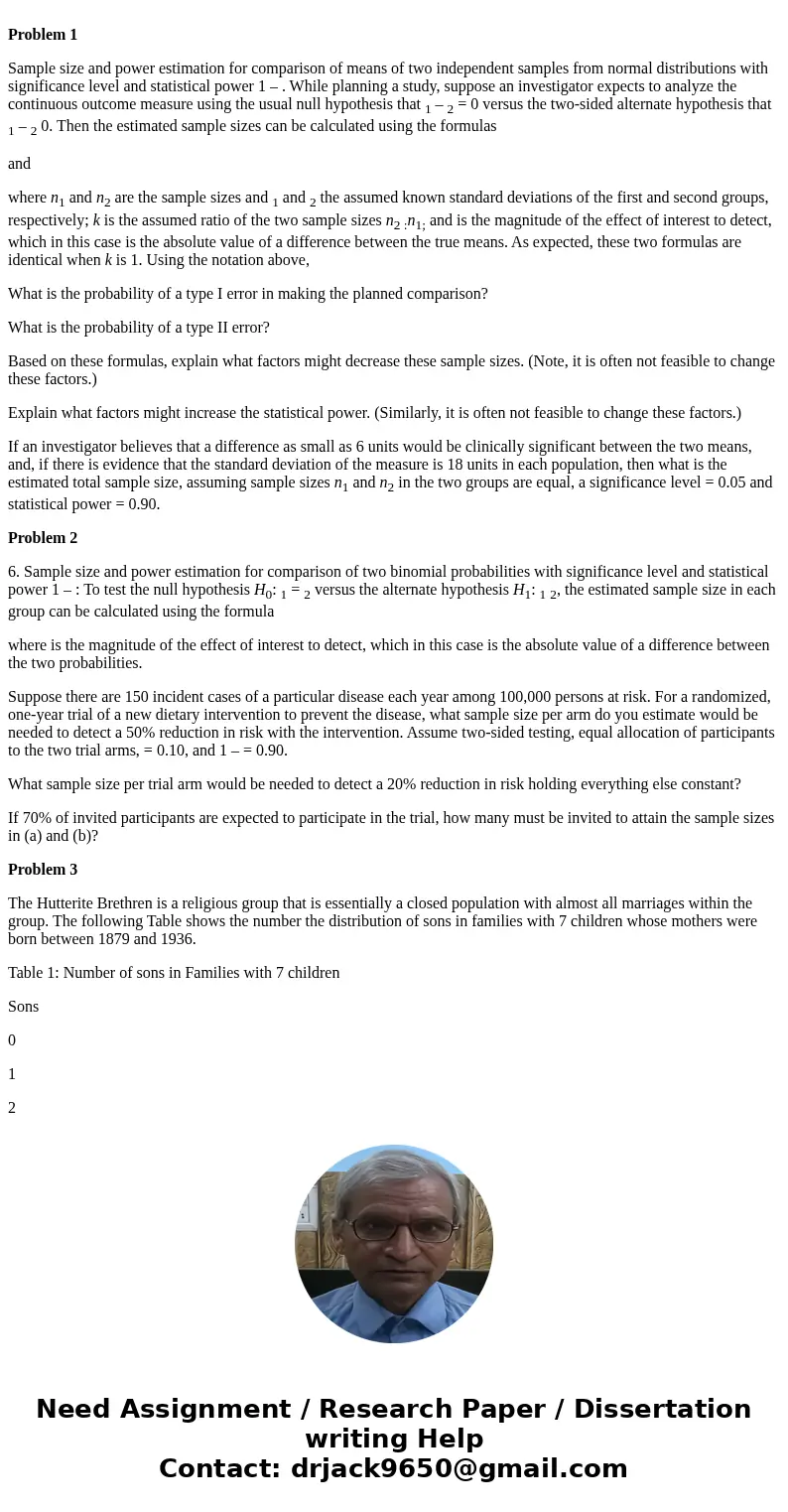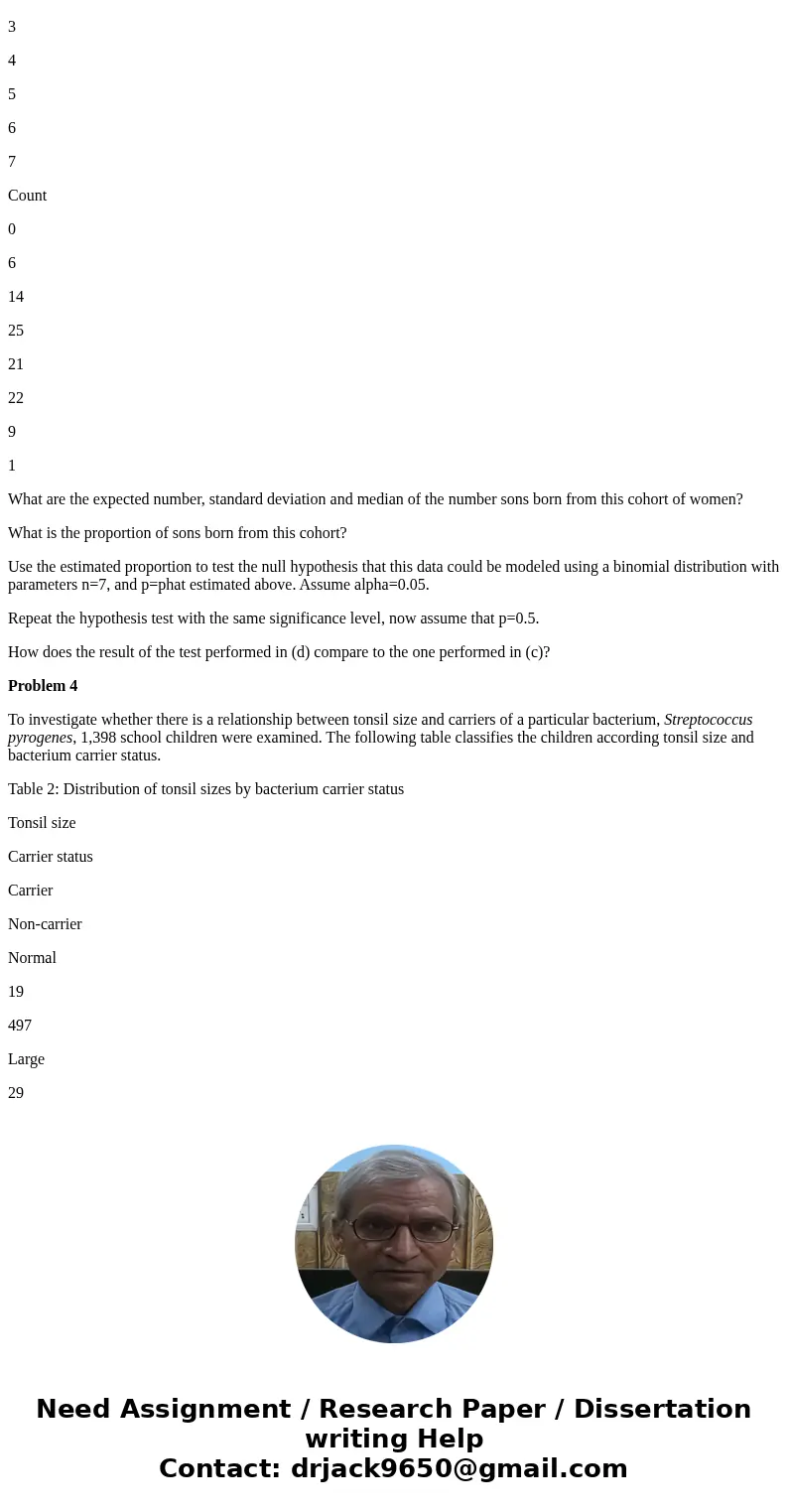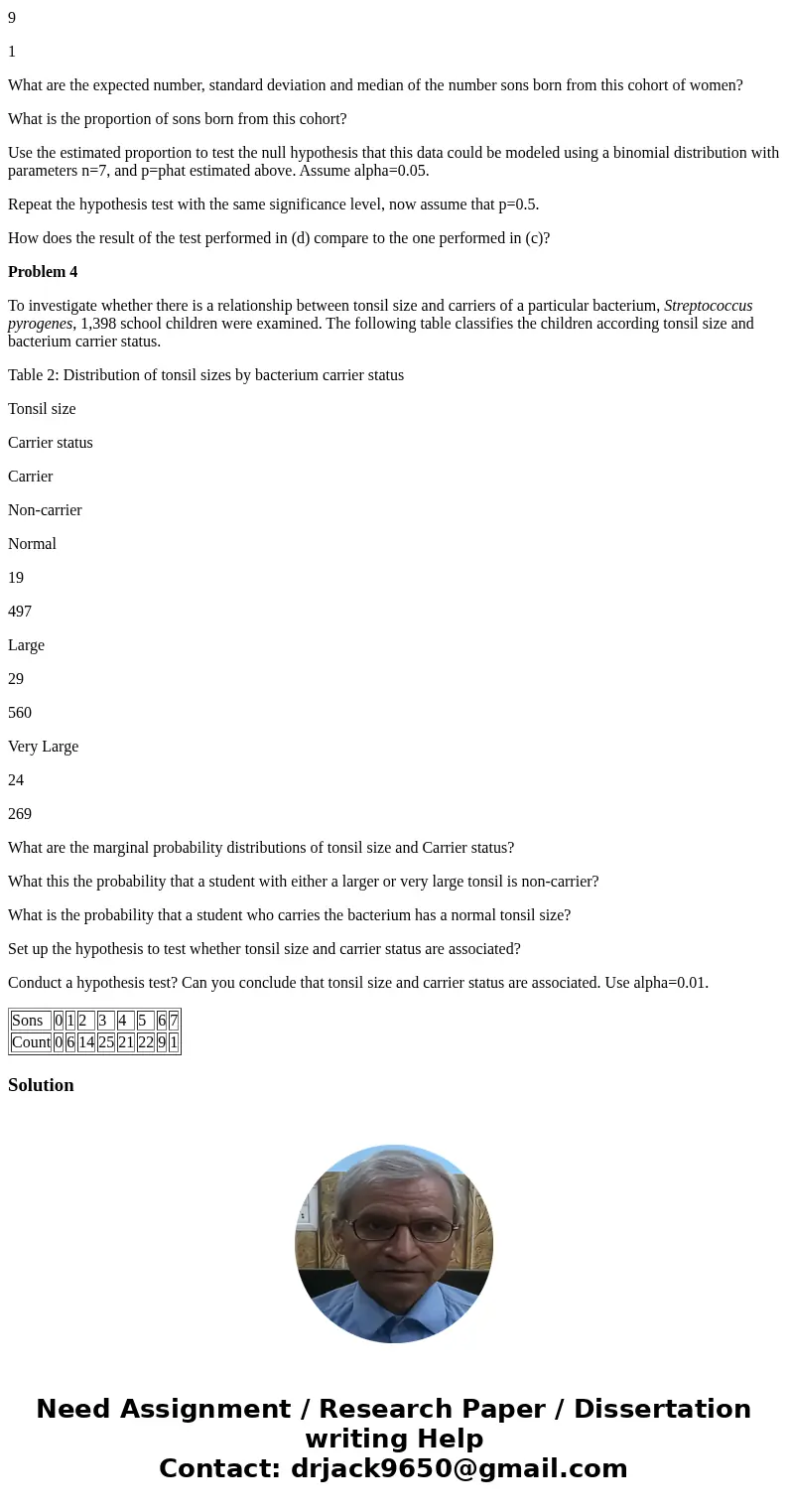Problem 1 Sample size and power estimation for comparison of
Problem 1
Sample size and power estimation for comparison of means of two independent samples from normal distributions with significance level and statistical power 1 – . While planning a study, suppose an investigator expects to analyze the continuous outcome measure using the usual null hypothesis that 1 – 2 = 0 versus the two-sided alternate hypothesis that 1 – 2 0. Then the estimated sample sizes can be calculated using the formulas
and
where n1 and n2 are the sample sizes and 1 and 2 the assumed known standard deviations of the first and second groups, respectively; k is the assumed ratio of the two sample sizes n2 :n1; and is the magnitude of the effect of interest to detect, which in this case is the absolute value of a difference between the true means. As expected, these two formulas are identical when k is 1. Using the notation above,
What is the probability of a type I error in making the planned comparison?
What is the probability of a type II error?
Based on these formulas, explain what factors might decrease these sample sizes. (Note, it is often not feasible to change these factors.)
Explain what factors might increase the statistical power. (Similarly, it is often not feasible to change these factors.)
If an investigator believes that a difference as small as 6 units would be clinically significant between the two means, and, if there is evidence that the standard deviation of the measure is 18 units in each population, then what is the estimated total sample size, assuming sample sizes n1 and n2 in the two groups are equal, a significance level = 0.05 and statistical power = 0.90.
Problem 2
6. Sample size and power estimation for comparison of two binomial probabilities with significance level and statistical power 1 – : To test the null hypothesis H0: 1 = 2 versus the alternate hypothesis H1: 1 2, the estimated sample size in each group can be calculated using the formula
where is the magnitude of the effect of interest to detect, which in this case is the absolute value of a difference between the two probabilities.
Suppose there are 150 incident cases of a particular disease each year among 100,000 persons at risk. For a randomized, one-year trial of a new dietary intervention to prevent the disease, what sample size per arm do you estimate would be needed to detect a 50% reduction in risk with the intervention. Assume two-sided testing, equal allocation of participants to the two trial arms, = 0.10, and 1 – = 0.90.
What sample size per trial arm would be needed to detect a 20% reduction in risk holding everything else constant?
If 70% of invited participants are expected to participate in the trial, how many must be invited to attain the sample sizes in (a) and (b)?
Problem 3
The Hutterite Brethren is a religious group that is essentially a closed population with almost all marriages within the group. The following Table shows the number the distribution of sons in families with 7 children whose mothers were born between 1879 and 1936.
Table 1: Number of sons in Families with 7 children
Sons
0
1
2
3
4
5
6
7
Count
0
6
14
25
21
22
9
1
What are the expected number, standard deviation and median of the number sons born from this cohort of women?
What is the proportion of sons born from this cohort?
Use the estimated proportion to test the null hypothesis that this data could be modeled using a binomial distribution with parameters n=7, and p=phat estimated above. Assume alpha=0.05.
Repeat the hypothesis test with the same significance level, now assume that p=0.5.
How does the result of the test performed in (d) compare to the one performed in (c)?
Problem 4
To investigate whether there is a relationship between tonsil size and carriers of a particular bacterium, Streptococcus pyrogenes, 1,398 school children were examined. The following table classifies the children according tonsil size and bacterium carrier status.
Table 2: Distribution of tonsil sizes by bacterium carrier status
Tonsil size
Carrier status
Carrier
Non-carrier
Normal
19
497
Large
29
560
Very Large
24
269
What are the marginal probability distributions of tonsil size and Carrier status?
What this the probability that a student with either a larger or very large tonsil is non-carrier?
What is the probability that a student who carries the bacterium has a normal tonsil size?
Set up the hypothesis to test whether tonsil size and carrier status are associated?
Conduct a hypothesis test? Can you conclude that tonsil size and carrier status are associated. Use alpha=0.01.
| Sons | 0 | 1 | 2 | 3 | 4 | 5 | 6 | 7 |
| Count | 0 | 6 | 14 | 25 | 21 | 22 | 9 | 1 |
Solution



 Homework Sourse
Homework Sourse